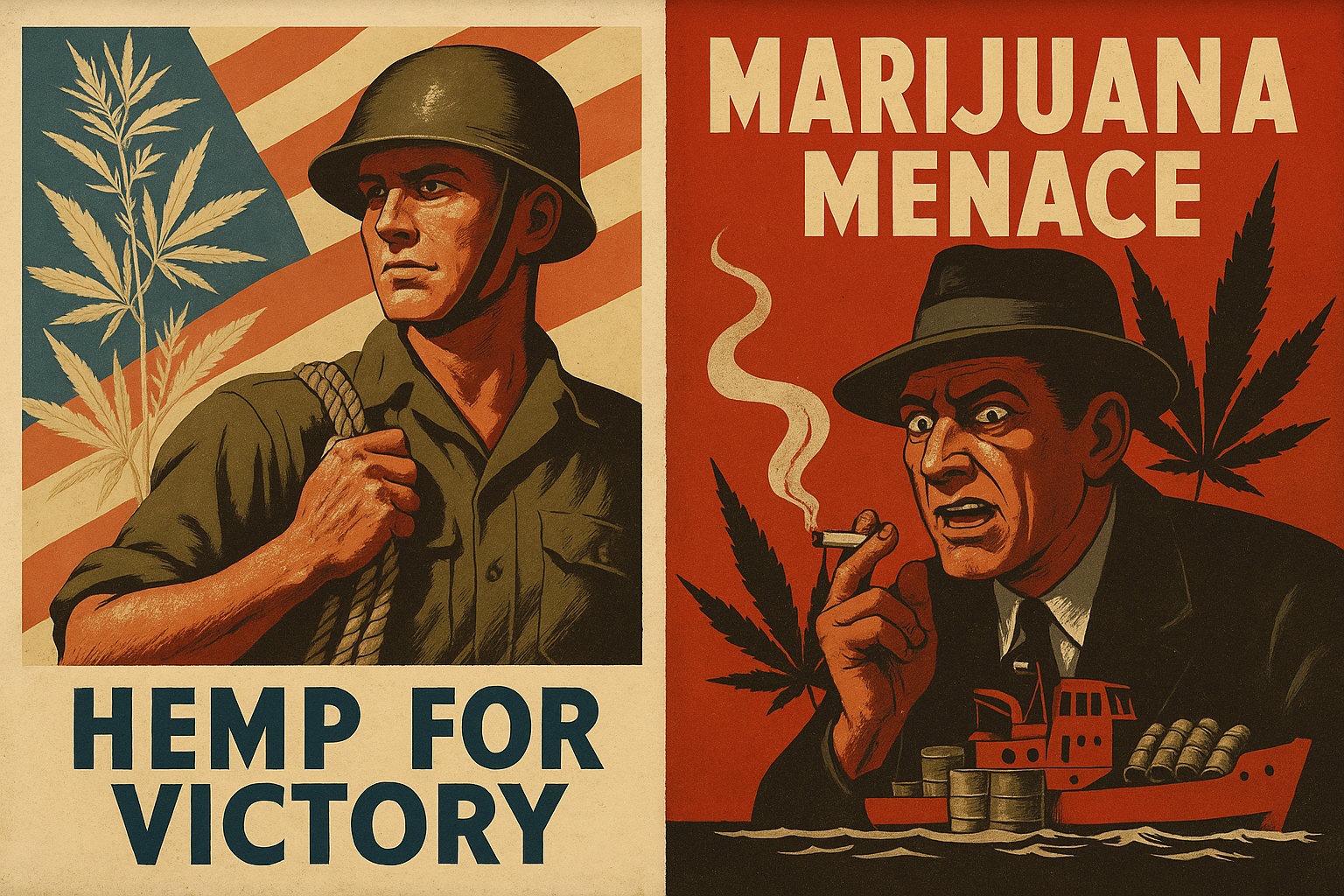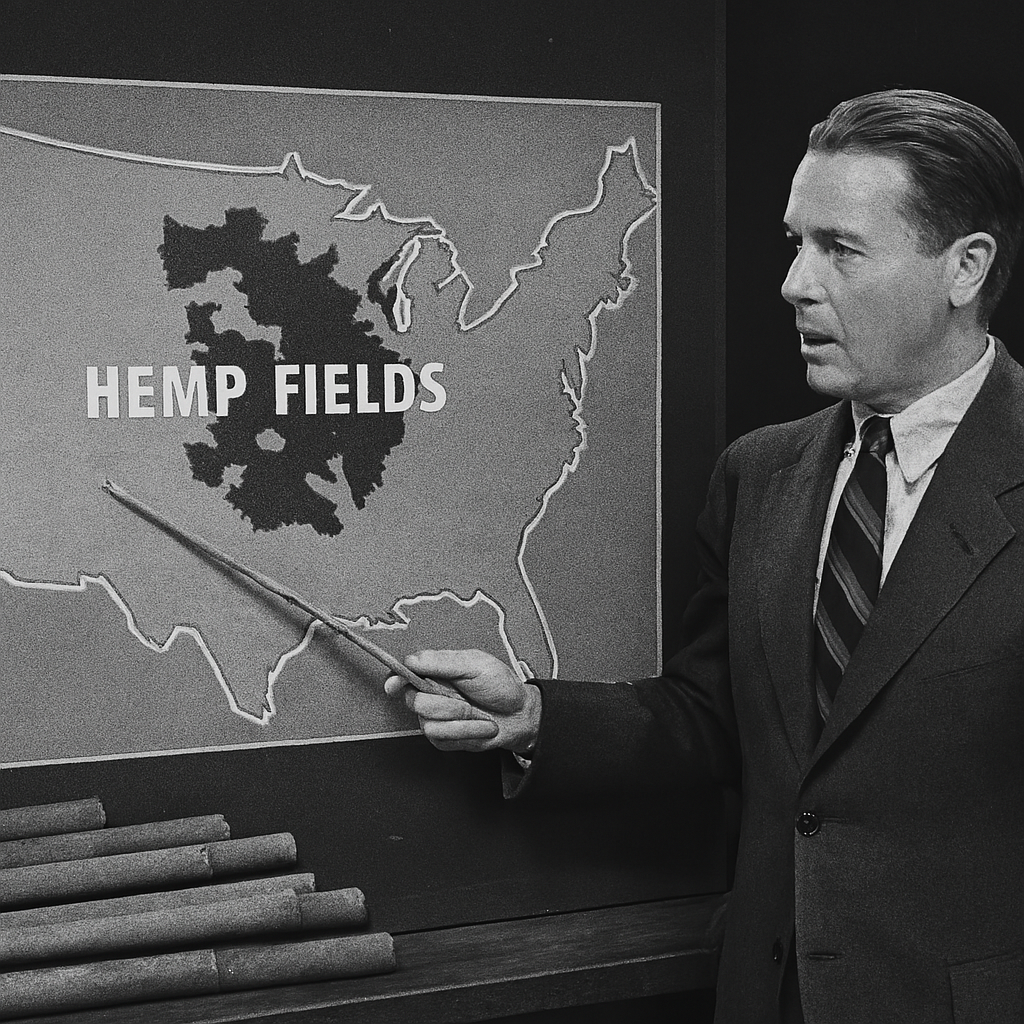WWII: Hemp for Victory and the Bamboo That Could Have Been
Hemp: Hero One day. Villain the next.
By the 1940s, America had buried hemp under the Marihuana Tax Act (1937) and locked bamboo behind the Plant Quarantine Act (1912). Both crops were sidelined. Both industries dismantled.
Then Pearl Harbor happened.
When Japan cut off America’s supply of jute and abaca from the Philippines, the fibers needed for rope, rigging, and uniforms, Washington panicked. Suddenly, hemp wasn’t a “dangerous drug” anymore. It was a war crop.
Hemp for Victory (1942)
In 1942, the USDA released a short film called Hemp for Victory, urging farmers to plant 350,000 acres of hemp to replace the lost Asian fibers (USDA Archive Film).
Seeds, loans, and tax breaks were handed out to farmers.
350,000 acres were planted in the Midwest by 1943.
Hemp was declared an essential war material — ropes, rigging, canvas, parachute webbing, even shoe laces were made from it (Smithsonian Magazine).
Hemp went from “criminal” to “patriotic” almost overnight.
But the minute the war ended, the USDA buried the film and hemp was criminalized again. By the 1950s, hemp was back in the narcotics category, erased to clear the runway for DuPont nylon, petro-plastics, and timber pulp.
👉 Good enough to win a war. Criminal the next day.
World War 2 Army Engineers testing bamboo for strength.
Bamboo in Wartime
Here’s the buried angle most people never hear: bamboo, too, was tapped during WWII; just not at the scale it could have been.
Military Research: Bamboo was studied for aircraft construction, suspension bridges, scaffolding, and lightweight containers because of its strength-to-weight ratio (U.S. Army Engineer Board Report, 1943).
Weapons & Gear: Bamboo spikes, spears, and even flame-thrower traps were deployed in the Pacific theater (by both U.S. and Japanese forces), a testament to its versatility (National WWII Museum).
Fuel & Charcoal: Bamboo charcoal was tested as a filter medium and fuel substitute during supply shortages (USDA Forest Products Lab, 1944).
But because bamboo remained under USDA quarantine, there was no domestic industry to scale it. Instead, the U.S. continued to rely on Asian bamboo sources, even while fighting a war in the Pacific. Another lost opportunity. By design.
1944 the Army tested bamboo for filtration capabilities. Bamboo was used against tear and mustard gas.
The Receipts They Don’t Teach in School
Hemp for Victory film (1942): USDA propaganda piece urging farmers to grow hemp (Internet Archive).
Smithsonian Research: Hemp was used for rope, rigging, canvas, parachutes, shoelaces, and more (Smithsonian Magazine).
Bamboo Military Research (1943): U.S. Army Engineer Board tested bamboo for building materials, fuel, and lightweight equipment (HathiTrust Archive).
Forest Products Lab (1944): Bamboo charcoal studied as wartime substitute (FPL Wartime Research).
Many bridges in the Pacific theatre were made of bamboo.
Bamboo and hemp are absent from store shelves.. So much for options.
Why Bury This Truth?
Because war exposes necessity. In peacetime, monopolies call hemp and bamboo “dangerous,” “invasive,” or “unprofitable.” In wartime, when the survival of the nation depends on them, they become essential overnight.
That’s not science. That’s power.
Read the full story in the book.
Evolution Mine: The Industrial Evolution—the blueprint for breaking the petrochemical playbook and building a regenerative economy.
👉 Buy on Amazon







